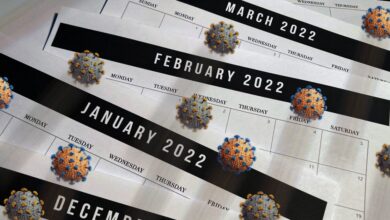High Access Charges Spur Neuroscientists to Start Their Own Journal

[ad_1]
The editors of a prominent neuroscience journal are sending a clear message to their publisher — and, they hope, to the broader academic-publishing community — by resigning en masse to begin a new journal in protest of what they say are “unethical and unsustainable” publishing fees.
More than 40 handling editors, associate editors, senior editors, and editors in chief for NeuroImage and its companion journal NeuroImage: Reports, which are published by Elsevier, on Monday announced they were leaving their positions to assume similar roles at the newly formed Imaging Neuroscience, which will be published by the nonprofit MIT Press. They plan for the new journal to eclipse NeuroImage in standing, saying the fact that the entire editorial staff is making the shift will ensure the new journal’s quality.
The high-profile move is the latest chapter in the long-unfolding battle over who pays and who benefits in the academic-publishing world. The departure from a well-regarded journal, and the plan to mount direct competition to it, also highlight the complex ecosystem that surrounds journals’ prestige and impact — and the interplay of a publisher’s reach and scale with the academic bona fides of the scholars who run a title.
The NeuroImage saga began in June 2022, when editors formally asked Elsevier, the Dutch publishing company that has put out the journal since its inception in 1992, to lower the article-processing charge — the amount authors must pay to publish their work in NeuroImage — to under $2,000, the resigning editors wrote in their announcement. The current charge is $3,450, a price they say is prohibitive to many scholars, particularly those with funding restrictions or who work in countries with less well-resourced research institutions.
In March, with no reduction having been offered, the NeuroImage team threw down a gauntlet: Lower the processing charge, or all of us will resign. That threat became reality this week, when the entire team — from handling editors to the editor in chief — officially left the journal. Elsevier representatives, they wrote, told them that the article-processing charge, or APC, wouldn’t be lowered “because they believe that market forces support the current APC.”
In a statement, Elsevier said it was “disappointed” in the editorial board’s decision and that it had “engaged constructively” in recent years to turn the journal open access, making it free to read. The company has tapped interim editors and plans to establish a permanent team of both in-house and external editors to keep publishing.
While the outgoing editors won’t handle any new submissions to NeuroImage, they plan to work until the end of 2023 on papers that have already been submitted to that journal. They hope to be ready to accept submissions to Imaging Neuroscience by mid-July. That’s when they plan to pick up right where they left off, said Shella D. Keilholz, a professor at Georgia Tech and Emory Universitywho was a senior editor of the journal. “I think that we can basically keep NeuroImage going, just with a different name,” Keilholz said. “The journal that Elsevier continues to run, they may call it NeuroImage, but it’s not going to be NeuroImage anymore.”
High Costs
The scholars’ exodus from NeuroImage shines a spotlight on the economics of academic publishing and the open-access movement. A key factor, if not the central one, is the article-processing charge, which publishing companies say is necessary for covering costs. As a one-time fee paid by a scholar or her institution prior to an article’s publication, a processing charge covers expenses incurred to copy edit, produce, and publish an article. The charges vary by discipline and publisher, but in many cases they have gradually risen over the years, as with NeuroImage. (The journal became fully open access in 2020, with an APC of $3,000; the price was hiked twice to reach its current rate of $3,450.)
Elsevier said in a statement that its policy is to set its processing charge at a rate that is competitively below the market average, relative to a journal’s quality. “The fee that has been set for NeuroImage is below that of the nearest comparable journal in its field,” Elsevier’s statement read. That comparison was based on comparative journals’ field-weighted citation index, though an Elsevier spokesperson could not immediately identify NeuroImage‘s “nearest comparable journal.” The journal Nature Neuroscience, which is published by Springer Nature, charges $11,690; Human Brain Mapping, a Wiley publication, charges $3,850.
We’re taking a risk because we’re disrupting this journal that we all love.
But journal editors don’t earn much to do their work, and peer reviewers evaluate papers for free, which the NeuroImage editors said contributes to an unfairly large profit margin for publishing companies. Further complicating the matter is the role of public money, said Kristen M. Kennedy, an associate professor in the behavioral-sciences department at the University of Texas at Dallas and a former senior editor of NeuroImage. Citizens’ tax money supports the work of scientists through grants from agencies like the National Institutes of Health and the National Science Foundation. As scholars, “we’re having to pay to do the science, but then we’re having to pay a third party who didn’t have anything to do with the science to disseminate the information, and they’re for-profit,” Kennedy said. “The taxpayers who’ve paid for the grant money to exist, if they want to read the outcome of that science, they then have to pay again, because all of our publications are put behind a paywall behind these major publishing houses.”
This was part of the rationale behind the Biden administration’s decision last summer to issue guidance that federally funded research should be made freely and immediately available to the public.
A New Leading Journal?
As the scholars behind the new journal get started, they have several advantages, beginning with prominence. NeuroImage, they say, has a longstanding reputation as the field’s leading journal, with both the highest impact factor and the most papers published each year in the discipline. If early online reception is any indication, they’ll have support for their departure: Many academics responded to the announcement by promising to send their work to Imaging Neuroscience, and more than 850 scholars have volunteered as peer reviewers for the new journal. Some have told the editors that they plan to retract their in-progress submissions at NeuroImage or will wait to submit their work until Imaging Neuroscience is ready to receive it. That, the editors said, includes early-career researchers who’ve promised to ask their principal investigators to submit work to the new journal.
A lower article-processing charge is another possible advantage. The final price is yet to be announced, but the editors hope it will be less than half of the current price at NeuroImage, and they’ve said the processing charge will be waived entirely for scholars at institutions in low- and middle-income countries. Cindy Lustig, a professor of psychology at the University of Michigan at Ann Arbor and a former senior editor at NeuroImage, said that she and her colleagues frequently heard complaints about the journal’s high processing charge. That’s why, she said, they were both “obligated and empowered” to make the shift. “We were,” she said, “big enough and respected enough to do it right.” For a smaller or less well-known journal, an exodus from the publisher would be a more difficult — if not disastrous — endeavor.
The cohesion among the now-former NeuroImage team was another plus. To marshal more than three-dozen scholars to an unanimous decision — for which Lustig credited the editor in chief, Stephen Smith of the University of Oxford — was unusual. At another journal, Kennedy imagined, “maybe their editor in chief might go to them and say, ‘Hey, we want to defect. Are you with me?’ And they might get some murmurs and a couple of yeses, who knows? But our journal is so well-honed, and we’ve just worked so well with each other for so long.”
Even for a group of well-known and collegial scholars, starting a new journal can be a tricky proposition. While they’ve found an alternative publisher, they still need to land on a processing charge that’s both equitable and sustainable and set up shop under a new name, then hope that their peers in the field follow through on their promises to send their work to the new publication. “We’re taking a risk because we’re disrupting this journal that we all love, but it’s riskier to do nothing and to wait and watch these prices continue to go up,” Keilholz said.
The founders of Imaging Neuroscience are keenly aware of the implications that their decision to leave NeuroImage could have for the discipline. For many early-career researchers, Lustig said, getting their first paper published in NeuroImage was a major career milestone, a sign that “‘OK, I can breathe now; I’m going to get a job,’” she said. As the shift plays out, it’s possible that NeuroImage‘s reputation will decline, while it could take several years for Imaging Neuroscience to accumulate the metrics that are traditionally considered hallmarks of success. (The Journal Citation Reports, for example, only measures impact factor after a journal has been indexed for two years.)
We feel that the era of extreme levels of profit made by some publishers is coming to an end.
Will the new journal succeed in its goal to “replace NeuroImage as our field’s leading journal,” as the editors wrote in their announcement? Lisa Janicke Hinchliffe, a professor at the library at the University of Illinois at Urbana-Champaign, said that depends on how the new journal is measured — and whether the editors’ aim is to topple their old journal. “I think they could very well build this into a top journal in the field,” she said. “Whether that will mean that Elsevier’s journal falls, that’s a different question.”
A Difficult Journey
While the scholars’ decision to leave Elsevier’s publication to start their own journal is unusual, it’s not unprecedented. According to one list, several-dozen journals have made “declarations of independence” in the last quarter-century. These predecessors’ experiences are instructive.
Shortly after the Scholarly Publishing and Academic Resources Coalition, or Sparc, formed in 1998, it started an effort called Declaring Independence to encourage journals’ editorial boards to walk away from commercial publishers. While a dozen or so journals did so at the time, Sparc later tabled the effort. “What we saw was it’s really hard to make that scale into a widespread solution or strategy,” Heather Joseph, the executive director, said. “It’s very labor-intensive to do this on a one-off, journal-by-journal basis.”
As open access has taken root, Joseph said, authors who find themselves saddled with high processing charges have begun asking more questions about the model. “It feels,” she said, “like things are breaking open.” The former NeuroImage editors nodded to the same sentiment in their announcement: “Although we appreciate that commercial publishers need to make some profit, we feel that the era of extreme levels of profit made by some publishers is coming to an end.”
Johan Rooryck, the executive director of the open-access project Coalition S, said the journey the Imaging Neuroscience team is about to embark on is a difficult one. There’s no infrastructure to draw on in doing so, a gap he’s working to address. Rooryck wants to create a “one-stop shop” where scholars can find those resources “without having to worry about the money, about the guidelines, about the submission system.” He envisions a platform that would allow prospective editorial teams to “pluck off elements from the shelf to set up their own journal in a few days.”
But in the absence of such a system, he doesn’t see a wave of editorial defections in the coming months. “I don’t expect it to happen to hundreds or thousands of journals overnight. It happens now, and then that garners a lot of attention, and then we wait for the next one,” he said.
Hinchliffe agreed. Without a place for a journal to go — like MIT Press for Imaging Neuroscience — editors’ aspirations of breaking free from the corporate restraints of a major publisher aren’t realistic. Even outlets like MIT Press, which has a strong open-access track record, don’t have infinite resources to establish new journals. “That’s the capacity question. It’s not researcher interest in different models, it’s the availability of opportunity to work in those other models,” she said. “So how many journals can these alternative places take up? I don’t have an answer. I can only observe that they don’t do too many at a time.”
MIT Press, for one, starts one or two new journals each year, said Nick Lindsay, its director of journals and open access. “We don’t have the capacity to be able to take on many, many new titles a year, so we have to be judicious about what we do.” But, Lindsay added, the press is looking forward to working with the Imaging Neuroscience team, which he called a “natural fit.” “They know very clearly what they want to do and what they want to accomplish, and given their experience, they know how to go about doing it,” he said.
In their unanimous decision to move, and in their broad community support, the Imaging Neuroscience team has already cleared the biggest hurdle, Rooryck said. “If the entire community moves, then what you have is an empty vessel. That empty vessel then is filled by whatever is left, so to speak, by people who are desperate to publish in a journal with an impact factor.”
He would know: Along with his role at Coalition S, Rooryck is the editor in chief of Glossa, a linguistics journal he helped launch in 2015 after he and the other editors at Lingua, an Elsevier publication, resigned. The Glossa transition — along with a similar move in 2019 that saw the team behind Elsevier’s Journal of Informetrics break away to form Quantitative Science Studies — has been held up as an example for Imaging Neuroscience to follow. (Glossa, though, does not charge an article-processing charge, while Imaging Neuroscience will.) “It’s basically like a family buying a new car,” Rooryck said. “You ditch the old car; you buy a new car. What’s important? It’s the family that moves in that car. You’re not looking at any way at the vehicle.”
The family in Rooryck’s metaphorical car — the editors at Imaging Neuroscience — are betting on the strength of that comparison. They’re hoping the reputation they’ve built as a collective will travel with them; that reputation, Kennedy said, is the reason behind NeuroImage‘s success. “That’s how the journal gets to the top of the ranks. It has very good scientists who submit papers to it, and it has a very, very good editorial board that selects from those the best, most sound, most impactful papers to publish,” she said. “That’s all us.”
[ad_2]
Source link






